Abstract
Visual inspection of the uterine cervix by paramedical personnel has been proposed for the early detection of cervical cancer, as an alternative to routine cytology screening in developing countries. We evaluated the performance of this procedure in detecting precursor lesions and cancer in a study involving 2843 married women in Kerala, India. Two thresholds were used to define a positive test. In the lower one, any abnormality was considered as positive. The cut-off point for the high threshold was one or more of the high-risk findings: bleeding on touch, suspicious growth/ulcer and hard, irregular, oedematous cervix. A Pap smear was performed on all subjects, and a biopsy was done for those with moderate dysplasia and above. A combination of cytology and histology findings was used as the 'gold standard'. Using the low threshold, 1279 (45%) women were positive on visual inspection, and with the higher threshold 179 (6.3%) were positive. There were six moderate dysplasias, nine severe dysplasias, ten carcinomas in situ and 13 invasive carcinomas. With the lower threshold, sensitivity and specificity to detect moderate dysplasia and above were 65.8% and 55.3% respectively; the values for severe dysplasia and above were 71.9% and 55.3% respectively and for invasive cancer were 92.3% and 55.2% respectively. With the higher threshold, the sensitivity decreased considerably (28.9% to detect moderate dysplasia lesions, 31.3% for severe dysplasia and 53.8% for clinical cancer) and the specificity increased to approximately 94%. At a lower threshold, the sensitivity was not satisfactory, and the test was highly non-specific; at a higher threshold sensitivity was even lower. Thus, the test characteristics of visual inspection are not very promising either as a preselection procedure for cytology or as a low-technology measure for cervical cancer screening in developing countries.
Full text
PDF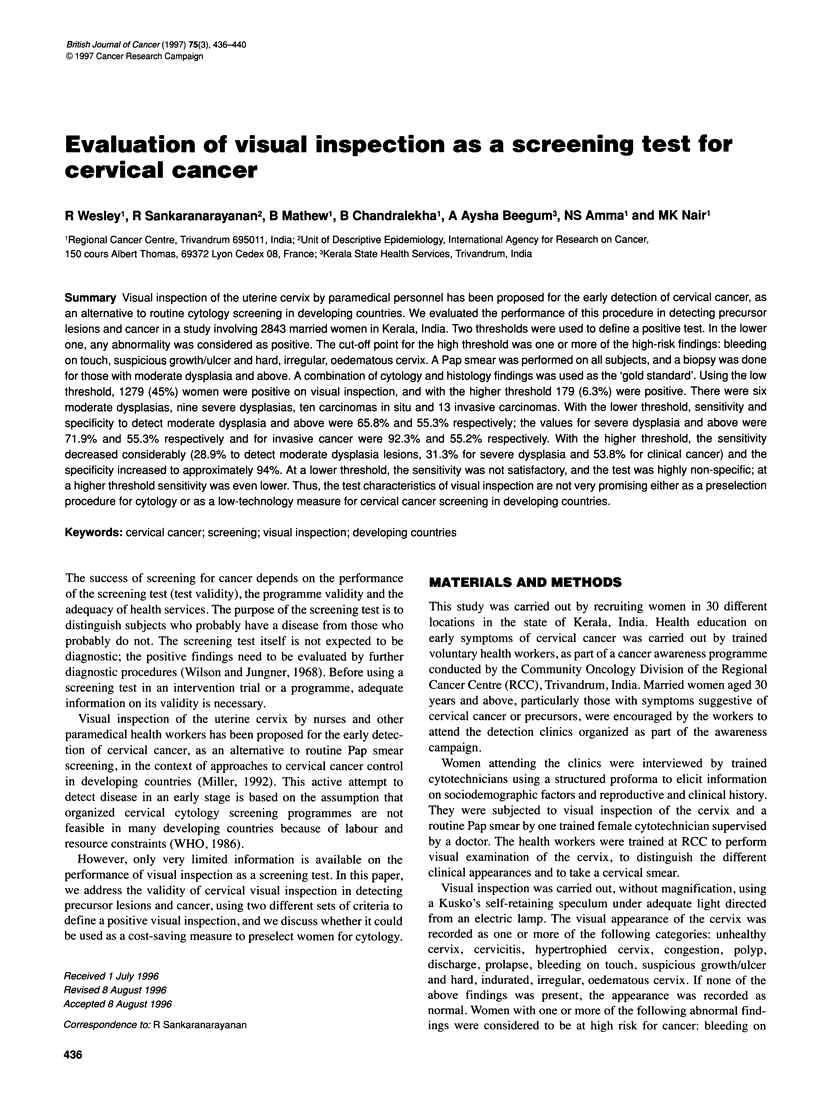
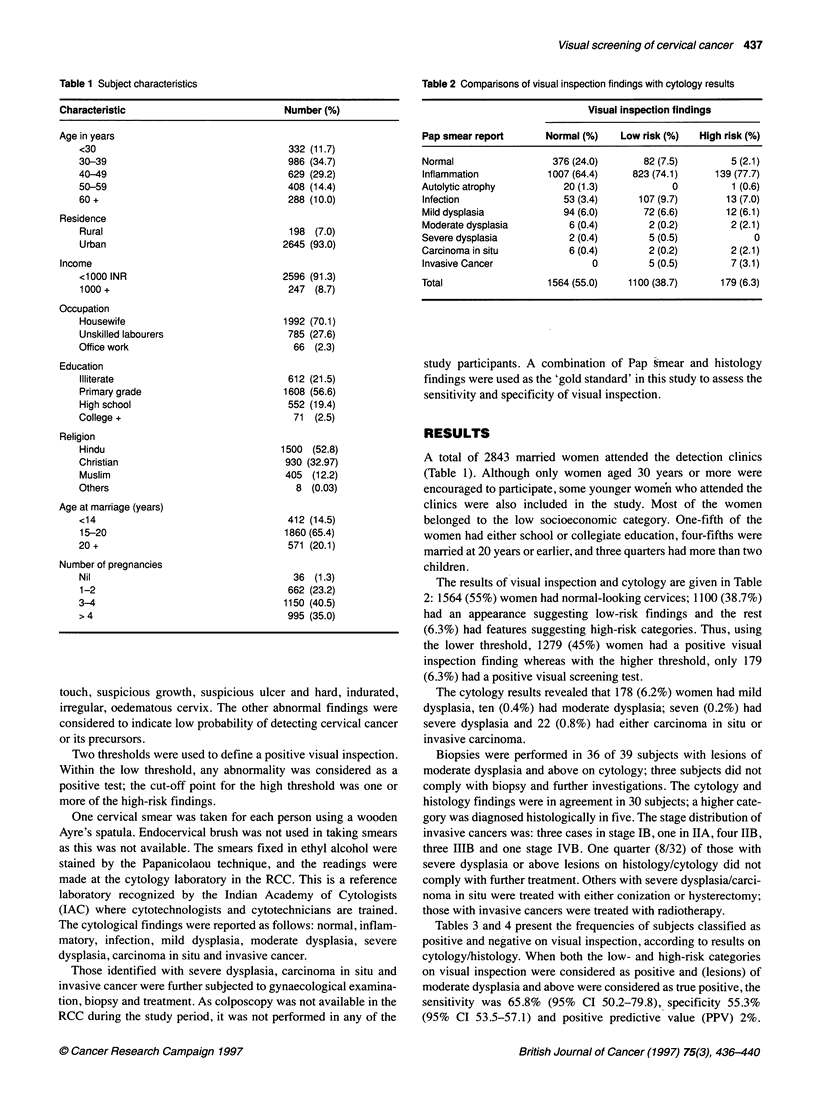
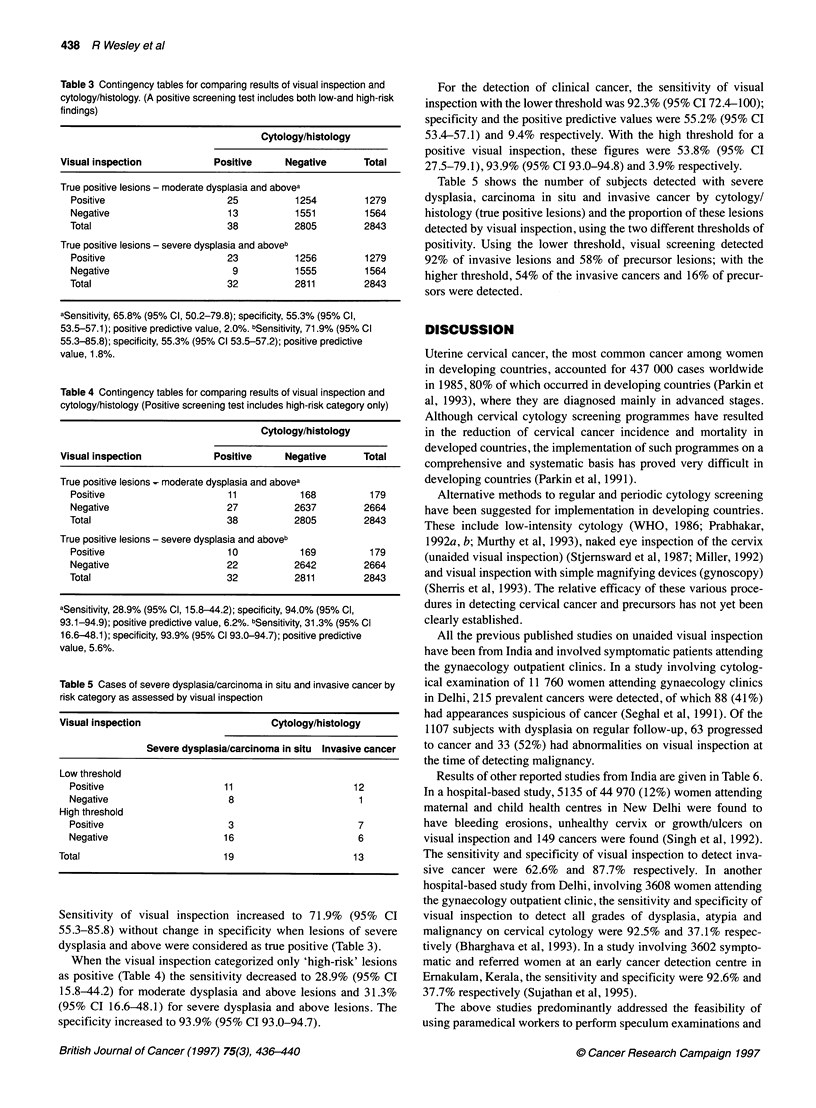
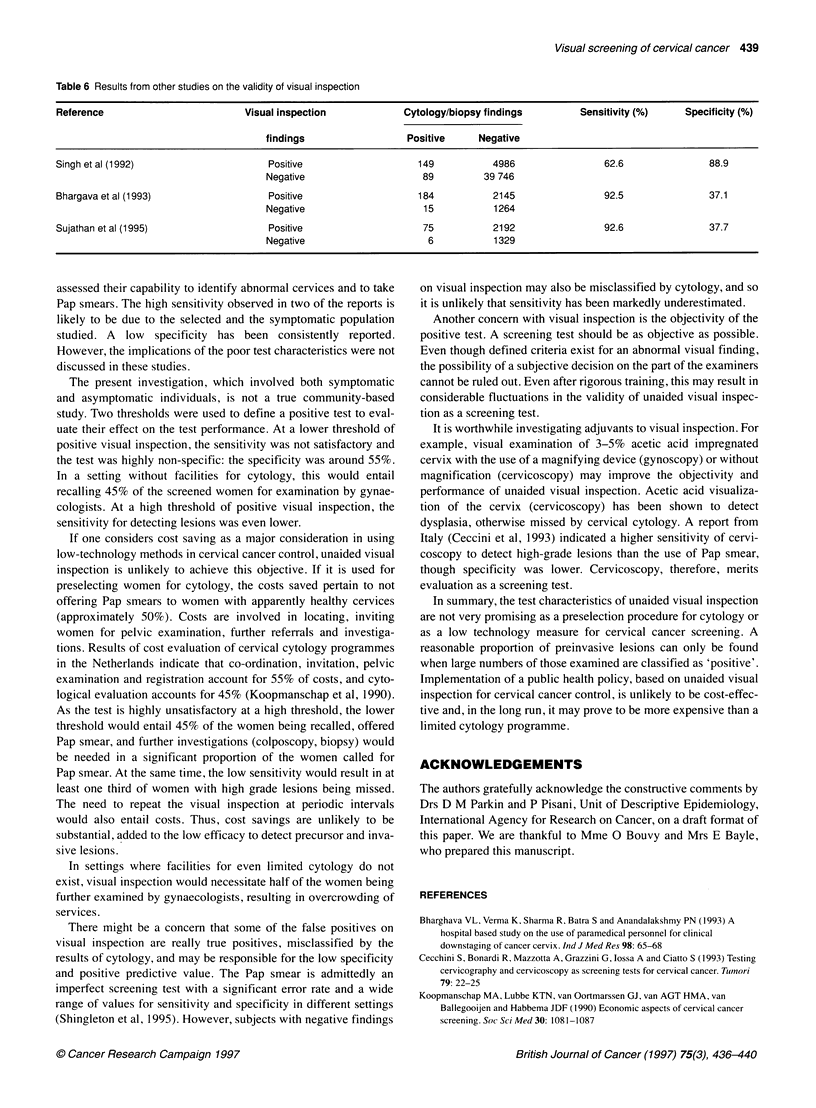
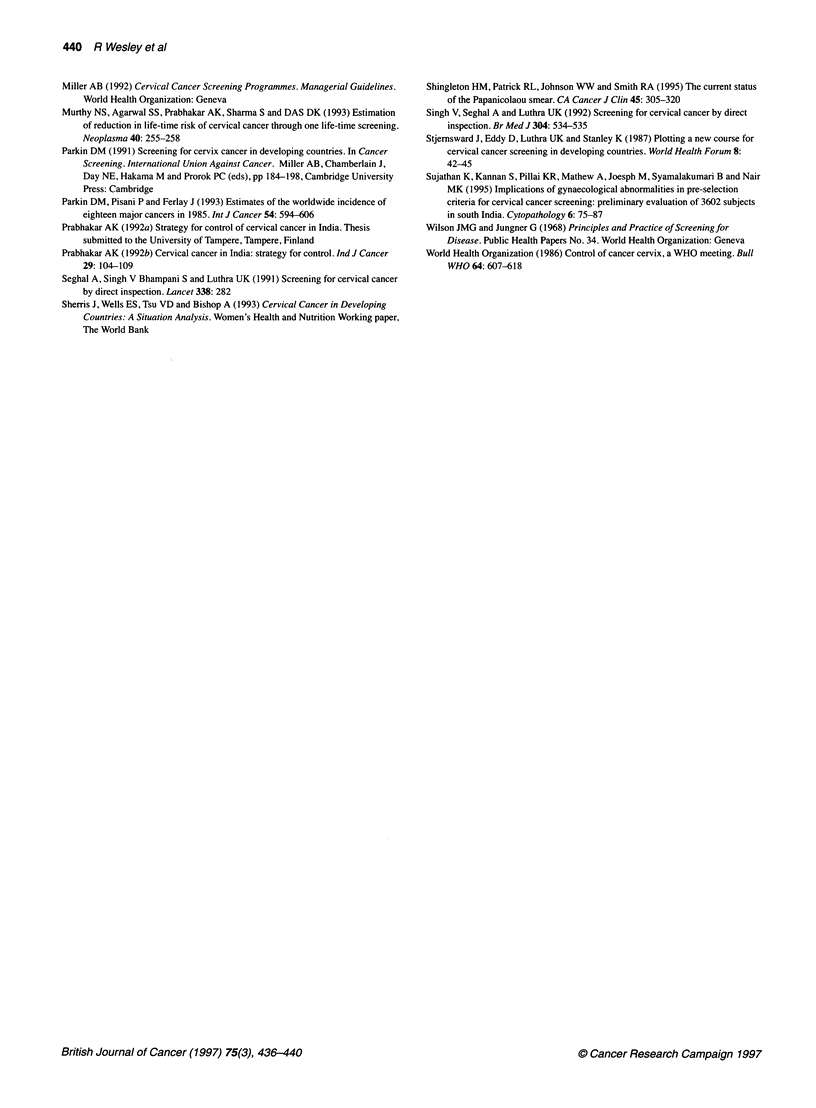
Selected References
These references are in PubMed. This may not be the complete list of references from this article.
- Bhargava V. L., Verma K., Sharma R., Batra S., Anandalakshmy P. N. A hospital-based study on the use of paramedical personnel for clinical downstaging of cancer cervix. Indian J Med Res. 1993 Apr;98:65–68. [PubMed] [Google Scholar]
- Cecchini S., Bonardi R., Mazzotta A., Grazzini G., Iossa A., Ciatto S. Testing cervicography and cervicoscopy as screening tests for cervical cancer. Tumori. 1993 Feb 28;79(1):22–25. doi: 10.1177/030089169307900104. [DOI] [PubMed] [Google Scholar]
- Koopmanschap M. A., Lubbe K. T., van Oortmarssen G. J., van Agt H. M., van Ballegooijen M., Habbema J. K. Economic aspects of cervical cancer screening. Soc Sci Med. 1990;30(10):1081–1087. doi: 10.1016/0277-9536(90)90294-3. [DOI] [PubMed] [Google Scholar]
- Murthy N. S., Agarwal S. S., Prabhakar A. K., Sharma S., Das D. K. Estimation of reduction of life-time risk of cervical cancer through one life-time screening. Neoplasma. 1993;40(4):255–258. [PubMed] [Google Scholar]
- Parkin D. M., Pisani P., Ferlay J. Estimates of the worldwide incidence of eighteen major cancers in 1985. Int J Cancer. 1993 Jun 19;54(4):594–606. doi: 10.1002/ijc.2910540413. [DOI] [PubMed] [Google Scholar]
- Sehgal A., Singh V., Bhambhani S., Luthra U. K. Screening for cervical cancer by direct inspection. Lancet. 1991 Aug 3;338(8762):282–282. doi: 10.1016/0140-6736(91)90420-t. [DOI] [PubMed] [Google Scholar]
- Singh V., Sehgal A., Luthra U. K. Screening for cervical cancer by direct inspection. BMJ. 1992 Feb 29;304(6826):534–535. doi: 10.1136/bmj.304.6826.534. [DOI] [PMC free article] [PubMed] [Google Scholar]
- Sujathan K., Kannan S., Pillai K. R., Mathew A., Joseph M., Symalakumari B., Nair M. K. Implications of gynaecological abnormalities in pre-selection criteria for cervical screening: preliminary evaluation of 3602 subjects in south India. Cytopathology. 1995 Apr;6(2):75–87. doi: 10.1111/j.1365-2303.1995.tb00451.x. [DOI] [PubMed] [Google Scholar]


